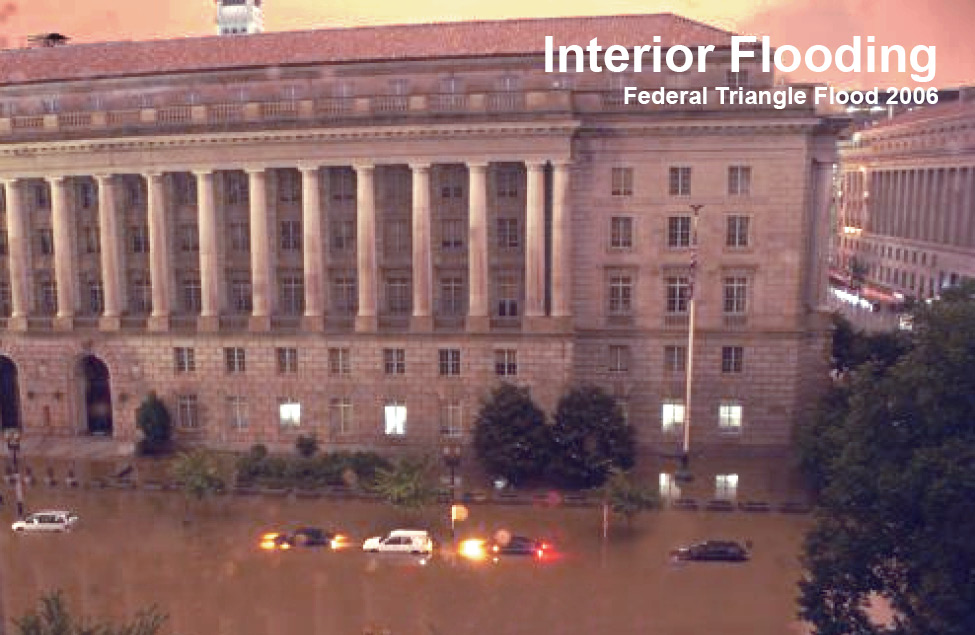A Concise Statement of the Situation
 New Orleans
New Orleans
Puerto Rico
Houston
It won’t be long before Washington, DC joins this list of flood-ravaged cities. We are long overdue for a storm that will flood large portions of the Capital with rainwater and sewage, threatening lives and causing up to 7.5 billion dollars in damage to government property and national treasures.
We have arrived at this dangerous point one step at a time over the past 230 years -
1815 Following the plan of Pierre L'Enfant, the free-flowing Tiber Creek, a tributary of the Potomac River, was channeled into the Washington Canal and upstream portions hidden under streets,
1871 the canal was filled and replaced with undersized storm sewers only large enough for a 15 year storm,
Ever Since much of the city has been paved with impervious surfaces.
One heavy, sustained rain could paralyze the Federal Triangle for days. Swift action on our part could mitigate the effect of flooding and save lives and billions of dollars in damages.
This site brings together materials to support a proposed plan of action, developed by Karolina Kawiaka, who teaches architectural design and sustainability classes at Dartmouth College.
The crux of the problem is that right now, rainwater has nowhere to go. The solution is, put simply, to make way for the water.
Kawiaka’s plan specifically addresses interior flooding and handling the runoff from rain, which is the most significant flooding threat to the Federal Triangle. It should make river flood mitigation easier, by keeping emergency personnel from working in floating sewage, and by functioning passively, so their efforts are not diverted.
Please consider sharing this information with people who would be affected by the coming floods – it is only valuable if people know of it.
The following video shows a time-lapse animation of 3D models constructed from 2D historic maps tracing the history of the site, explains what changes have led to the current dangerous situation, and presents a good overview of a sensible approach to correcting it. More information can be found throughout this site.